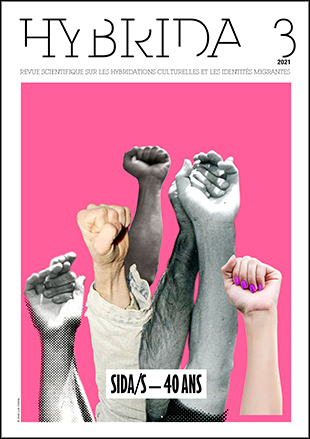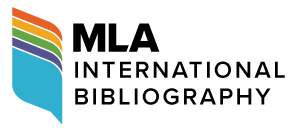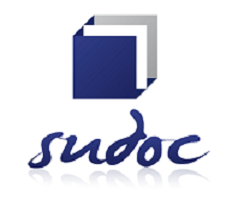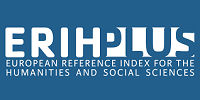Autopornography. About the relationship between autofiction, pornography, homosexuality and AIDS in ‘Dans ma chambre’ by Guillaume Dustan (1996)
DOI:
https://doi.org/10.7203/HYBRIDA.3.21659Keywords:
Guillaume Dustan, autopornography, autofiction, AIDS, homosexual identity Abstract
Abstract
Critics regularly describe the first three novels of the French writer Guillaume Dustan as a ‘autopornographic trilogy’ and invoke the author himself as the inventor of the term ‘autopornography’. Focusing on the novel Dans ma chambre (1996), the contribution examines what motivates autopornography in Dustan’s work and how pornography and autofiction are related to each other. The thesis is that autopornography is conditioned by two main factors: firstly, the defence of identity as a sexually active and potent homosexual in the Parisian ‘ghetto’; secondly, the narrator’s HIV infection, which leads to an alienation of the body, so that the narrator, as a counter-reaction, tries to regain his own autonomy and independence by living his sexual freedom.
 Downloads
Downloads
 References
References
Act-Up Paris (2005). Oublier Dustan. In actupparis.org (23 novembre 2005). https://web.archive.org/web/20080212054554/https://www.actupparis.org/article2240.html
Andersson, J. (2019). Homonormative aesthetics: AIDS and ‘de-generational unremembering’ in 1990s London. Urban Studies, 56(14), 2993–3010. https://doi.org/10.1177/0042098018806149
Badin, A. (2014). (Re)lire Guillaume Dustan, quinze ans après. Spirale, 248, 40-41. https://id.erudit.org/iderudit/71572ac
Brunschwig, O. (2008). « Je suis indétectable » : en corps, le sida. La clinique lacanienne, 13, 147-165. https://doi.org/10.3917/cla.013.0147
Boisseron, B. (2003). Post-coca et post-coïtum: La jouissance du logo chez Guillaume Dustan et «Seinfeld». L’Esprit Créateur, 43(2), 81-91. https://www.doi.org/10.1353/esp.2010.0349
Davis, O. (2009). Guillaume Dustan’s ‘autopornobiographie’ : is there room for trash in the queer subcultural archive ? In H. Vassello / P. Cooke, Alienation and alterity (pp. 59-76). Peter Lang.
Dean, T. (2009). Unlimited Intimacy. Reflections on the Subculture of Barebacking. University of Chicago Press.
Doubrovsky, S. (1980). Autobiographie/Vérité/Psychanalyse. L’Esprit Créateur, 20(3), 87–97. https://www.jstor.org/stable/26283821
Dustan, G. (1999). Un désir bien naturel. In P. Salducci, Écrire gai (pp. 83-120). Stanké.
Dustan, G. (2004). Ce je peut-il être moi ? In Écritures N°14 : Danger Dustan Engagement (p. 46). La Cinquieme Couche, coll. Revue Ecritures.
Dustan, G. (2013a). Dans ma chambre. In Œuvres I (pp. 31-132), POL.
Dustan, G. (2013b). Je sors ce soir. In Œuvres I (pp. 135-227), POL.
Dustan, G. (2013c). Plus fort que moi. In Œuvres I (pp. 233-350), POL.
Dustan, G. (2021), Génie Divin. In Œuvres II (pp. 377-643), POL.
Dustan, G. & Lefeuve, J. (1996). Avec vices. Double face, 9.
Eco, U. (1985). Lector in fabula, Grasset.
Evans, E. (2015). Your HIV-positive sperm, my trans-dyke uterus: Anti/futurity and the politics of bareback sex between Guillaume Dustan and Beatriz Preciado. Sexualities, 18(1–2), 127–140. https://doi.org/10.1177/1363460715569138
Ferez, S. & Perera, É. (2018). « Ceux qui disent que je suis malade, je les invite à venir prendre l’entraînement avec moi. » Devenir body-builder à l’épreuve du VIH. Staps, 119, 95-116. https://doi.org/10.3917/sta.119.0095
Haderbache, A. (2001). Sexe, drogue, séropositivité : un leitmotiv de la fête chez Guillaume Dustan. In E. Real, D. Jiménez, D. Pujante, et A. Cortijo (éds.), Écrire, traduire et représenter la fête (pp. 565-573). Universitat de València.
Haderbache, A. (2010). La trithérapie et la recherche de l’absolu de la sexualité comme discours du soi chez Érik Rémès et Guillaume Dustan. In N. Balutet (éd.), Écrire le sida (pp. 97-108). Jacques André.
Hendrickson, D. et Siegel, M. (1998). The Ghetto Novels of Guillaume Dustan. Paroles Gelées 16(1), 97-119. https://doi.org/10.5070/PG7161003081
Ingenschay, D. (1997). Nackte Schweine, nasse Prinzen. Der Zusammenhang von Autobiographie und Pornographie in der zeitgenössischen deutschen Schwulenliteratur. In Barbara, V. (éd.), Die nackte Wahrheit (pp. 23-49). Deutscher Taschenbuch-Verlag.
Jacinto, G. (2017). Autofiction littéraire, pornographie queer et culture trash : politique du corps et du sexe dans l’œuvre de Guillaume Dustan. French Cultural Studies, 28(3), 282–290. https://doi.org/10.1177/0957155817710418
Kollias, H. (2008). Guillaume Dustan, master of the drive. Journal of Romance Studies, 8(2), 113-130. https://doi.org/10.3828/jrs.8.2.113
Loret, É. (5 septembre 1996). Oh ! My gode. Guillaume Dustan, Dans ma Chambre, P.O.L., 158 pp., 85 F. Libération. https://www.liberation.fr/livres/1996/09/05/oh-my-godeguillaume-dustandans-ma-chambrepol-158-pp-85-f_183483/
Maingueneau, D. (2007). La littérature pornographique. Armand Colinn.
Menninghaus, W. (2003). Disgust. The Theory and History of a Strong Sensation. State University of New York Press.
Naguschewski, D. (2001). Von der Gesellschaft ins Ghetto ? Guillaume Dustan und die Schwule Literatur in Frankreich. In D. Naguschewski et S. Schrader (éds.), Sehen, Lesen, Begehren (pp. 251–272). Edition Tanvia/Verlag Walter Frey.
Najm, D. (2016). Défense et illustration du bareback : de la responsabilité à l’oeuvre chez Guillaume Dustan et Érik Rémès. In A. Badin et al. (éds.), Littérature du sida, alors et encore (pp. 112–120). Brill.
Renonçay, P. (2005). L’origine du monde. Autofiction et pornographie. Atelier du roman, 44, 155–164.
Rivas, J. (2017). The Prosthetic Pleasures of Guillaume Dustan. Mosaic: an interdisciplinary critical journal, 50(4), 33-49. https://www.muse.jhu.edu/article/679136
Schäfer, C. (2008). Die Autofiktion zwischen Fakt und Fiktion. In I. O. Rajewski I. et U. Schneider (éds.), Im Zeichen der Fiktion (pp. 299-326). Franz Steiner Verlag.
Sontag, S. (2010). L’imagination pornographique. In L’œuvre parle. Œuvres complètes V (pp. 341–400). Christian Bourgois.
Published
How to Cite
-
Abstract756
-
HTML (Français )132
-
PDF (Français )453
Issue
Section
License
![]()
All the documents in the OJS platform are open access and property of their respective authors.
Authors publishing in the journal agree to the following terms:
- Authors keep the rights and guarantee HYBRIDA the right to be the first publication of the document, licensed under a Creative Commons license Attribution-NonCommercial-ShareAlike 4.0 International (CC BY-NC-SA 4.0) that allows others to share the work with an acknowledgement of authorship and publication in the journal.
- Authors are allowed and encouraged to spread their work (once published) through electronic means using personal or institutional websites (institutional open archives, personal websites or professional and academic networks profiles) once the text has been published.
















